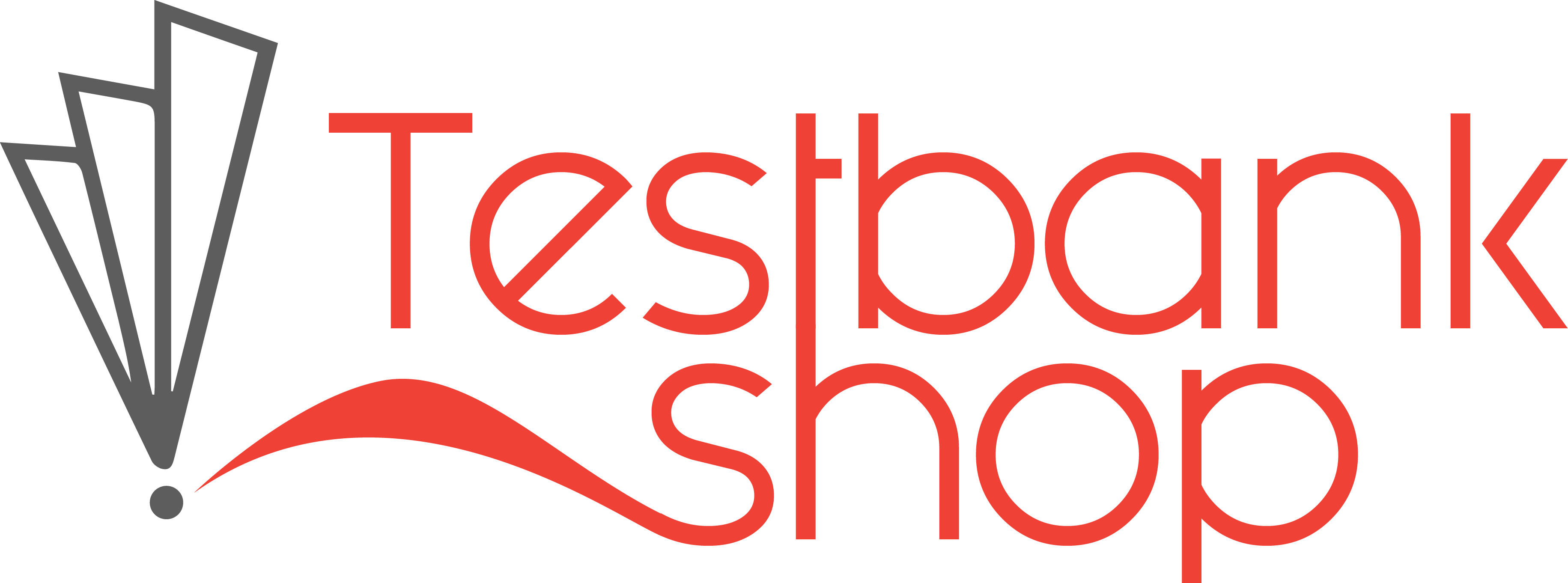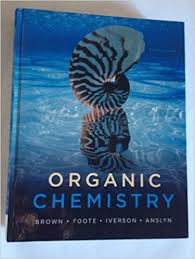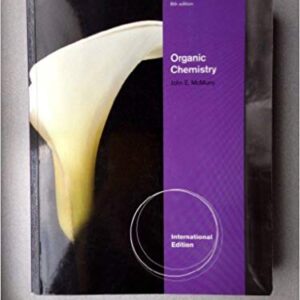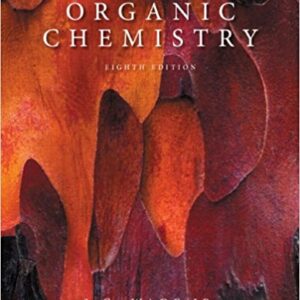Organic Chemistry 6th Edition By Brown Foote Iverson – Test Bank
CHAPTER 3–STEREOISOMERISM AND CHIRALITY
1. Which of the following is the definition of a pair of enantiomers?
A. A pair of structures that are superposable mirror images of one another
B. A pair of stereoisomers that are non-superposable mirror images of one another
C. A pair of stereoisomers that are not mirror images of one another
D. A pair of stereoisomers that have equal specific rotations
2. Which of the following is the definition of a pair of diastereomers?
A. A pair of structures that are superposable mirror images of one another
B. A pair of stereoisomers that are non-superposable mirror images of one another
C. A pair of stereoisomers that are not mirror images of one another
D. A pair of stereoisomers that have equal specific rotations
3. Which of the following is the definition of chirality?
A. The non-superposability of an object on its mirror image
B. The superposability of an object on its mirror image
C. A molecule that has a carbon atom with four different substituents
D. A molecule with a mirror image
4. Which of the following is the definition of a meso compound?
A. A molecule with stereocenter centers which is a chiral
B. A molecule with stereocenter centers which is not chiral
C. A diastereomer with no stereocenter centers
D. A chiral compound with more than one stereocenter center
5. Which of the following statements is not true regarding pairs of enantiomers?
A. They have identical melting points
B. They have identical boiling points.
C. They rotate plane-polarized light in opposite directions
D. They react at identical rates with chiral reagents
6. Which of the following statements is true?
A. All mirror images are enantiomers
B. All molecules that have stereocenter centers are chiral
C. Isomers that are not superposable on their mirror images are enantiomers
D. Superposable structural isomers are enantiomers
7. Which of the following structures is different from the other three?
A. 1
B. 2
C. 3
D. 4
8. Which of the following structures is different from the other three?
A. 1
B. 2
C. 3
D. 4
9. Which of the following compounds is/are chiral?
A. only 1
B. only 1 and 2
C. only 2 and 3
D. 1, 2 and 3
10. Which of the following compounds is/are chiral?
A. only 1
B. only 1 and 2
C. only 2 and 3
D. 1, 2 and 3




